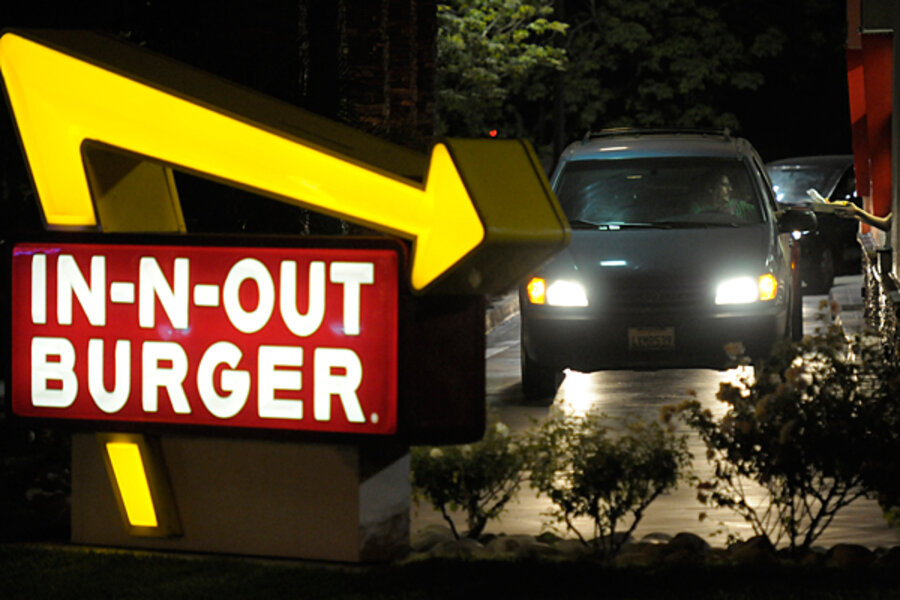Birthplace of the drive-thru bans them to curb obesity
| Los Angeles
Holy Hamburger!
The southern California town of Baldwin Park – the reputed birthplace of the "drive-thru" restaurant – has put a nine-month ban on the construction of any new drive-in food emporiums.
The In ‘N Out Burger chain, credited with spawning the trend that led to McDonald’s and all the rest, was founded in 1948 in a town now home to some 83,000 residents with a median income of $42,000 – and 17 drive-in restaurants. Local officials say they wanted to tackle not just the traffic snarls inherent in an “in-car” dining culture, but be part of the national campaign to stem obesity – a cause championed by First Lady Michelle Obama.
“We see ourselves at the forefront of the fight on obesity,” says Marc Castagnola, Baldwin Park community development manager. “We also want to encourage people to get out of their cars and walk around,” he says with a rueful nod to the obvious challenge of bucking a southern California car culture.
This connection between fast-food establishments and the expanding national waistline is well-documented. A 2005 study from Johns Hopkins and Georgetown Universities, “The City Planner’s Guide to the Obesity Epidemic: Zoning and Fast Food,” has a section entitled “Connecting the Dots from Obesity to Fast Food and Zoning” that frames the debate. It states that obese and overweight adults cost the US between $98 billion to $129 billion each year in national health care expenditures.
The study points a finger directly at the fast-food industry, saying, “… children who eat fast food compared to those who do not eat it consume more total energy, more total fat, more saturated fat, more total carbohydrates, more added sugars, more sugar-sweetened drinks, less fluid milk, less fiber, less fruits, and less nonstarchy vegetables."
The authors go on to conclude the information presents “a logical and compelling justification for the regulation of fast food outlets by zoning laws to protect the public’s health from the devastating obesity epidemic.”
The town just northeast of downtown Los Angeles is not the first to take such action. L.A. itself tried it for a year and other cities in the Golden State are looking into restricting the numbers. At the same time, says California Restaurant Association spokesman Daniel Conway, it is not fair to target one part of a complex problem involving many facets of human behavior.
“The fast food industry has been moving in this direction for a while, providing more healthy alternatives as well as menu labeling information,” he points out. (Not a moment too soon, since the federal regulation requiring all restaurant chains of 20 or more outlets to label menu food passed with the recent health care reform bill.)
But even obesity experts acknowledge that the human component is more important and complicated than a single piece of zoning or federal legislation. Low-income areas need access to more grocery stores and outlets for fresh fruits and vegetables, says James Zervios, communications director of the Tampa-based Obesity Action Coalition.
The real struggle is “to empower people to learn to make the right choices on decisions about their lives,” says Mr. Zervios. Fast-food restaurants may indeed be contributing to health issues, but the public seems to agree with a more lifestyle-oriented solution. While 28 year-old Ali Pak munches on an In ‘N Out Burger, he says the answer is not necessarily less fast food, but “more exercise.”
Related:





